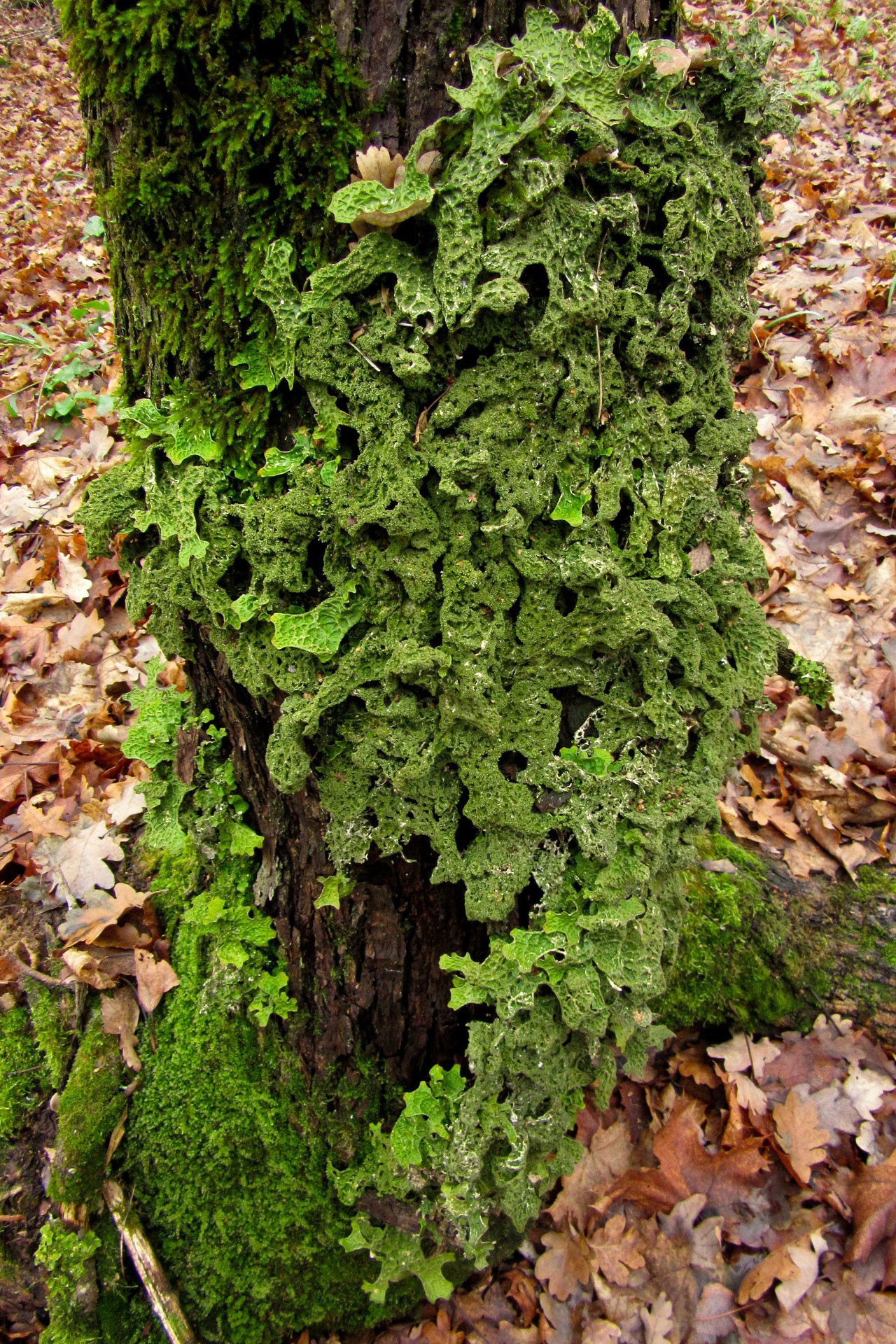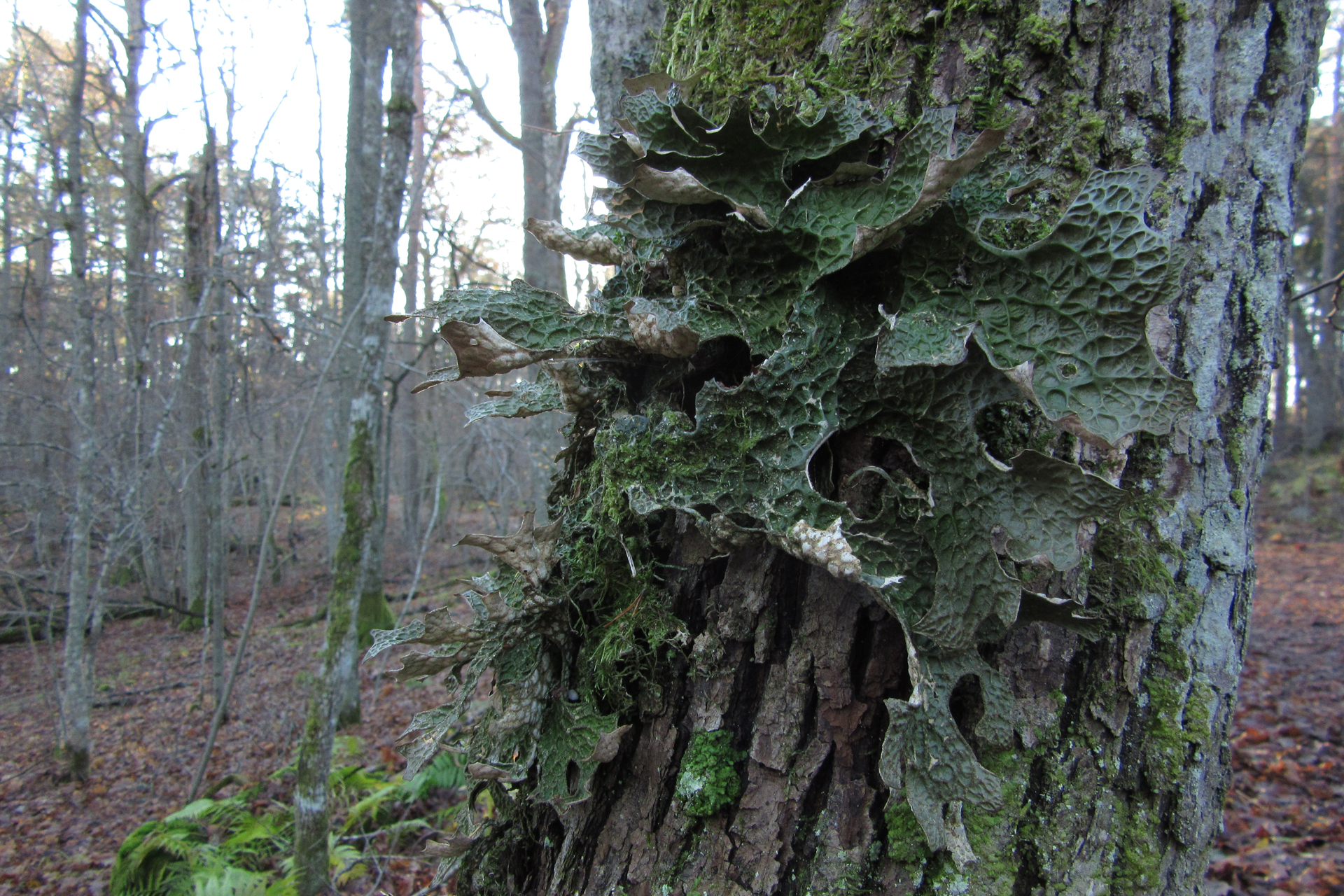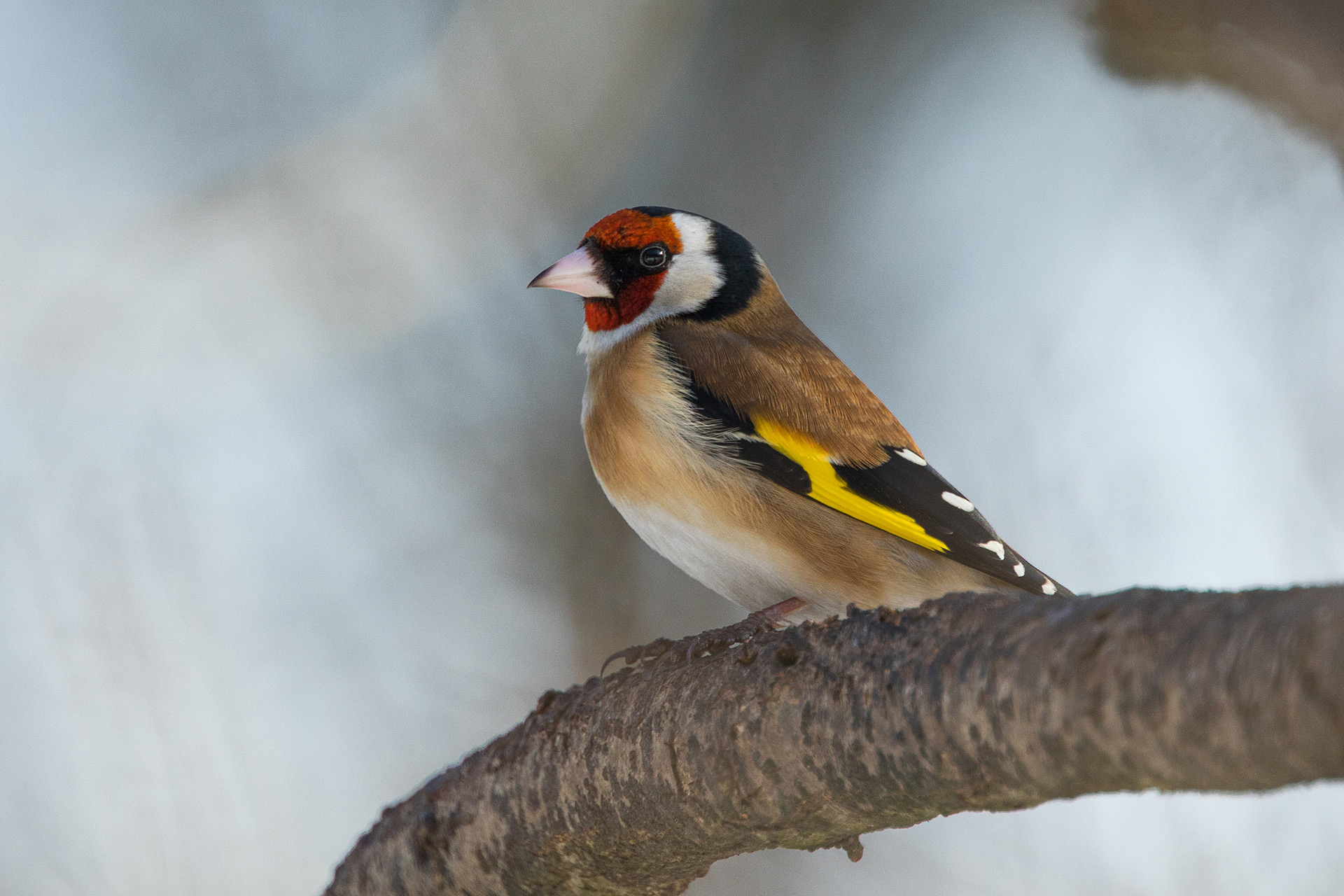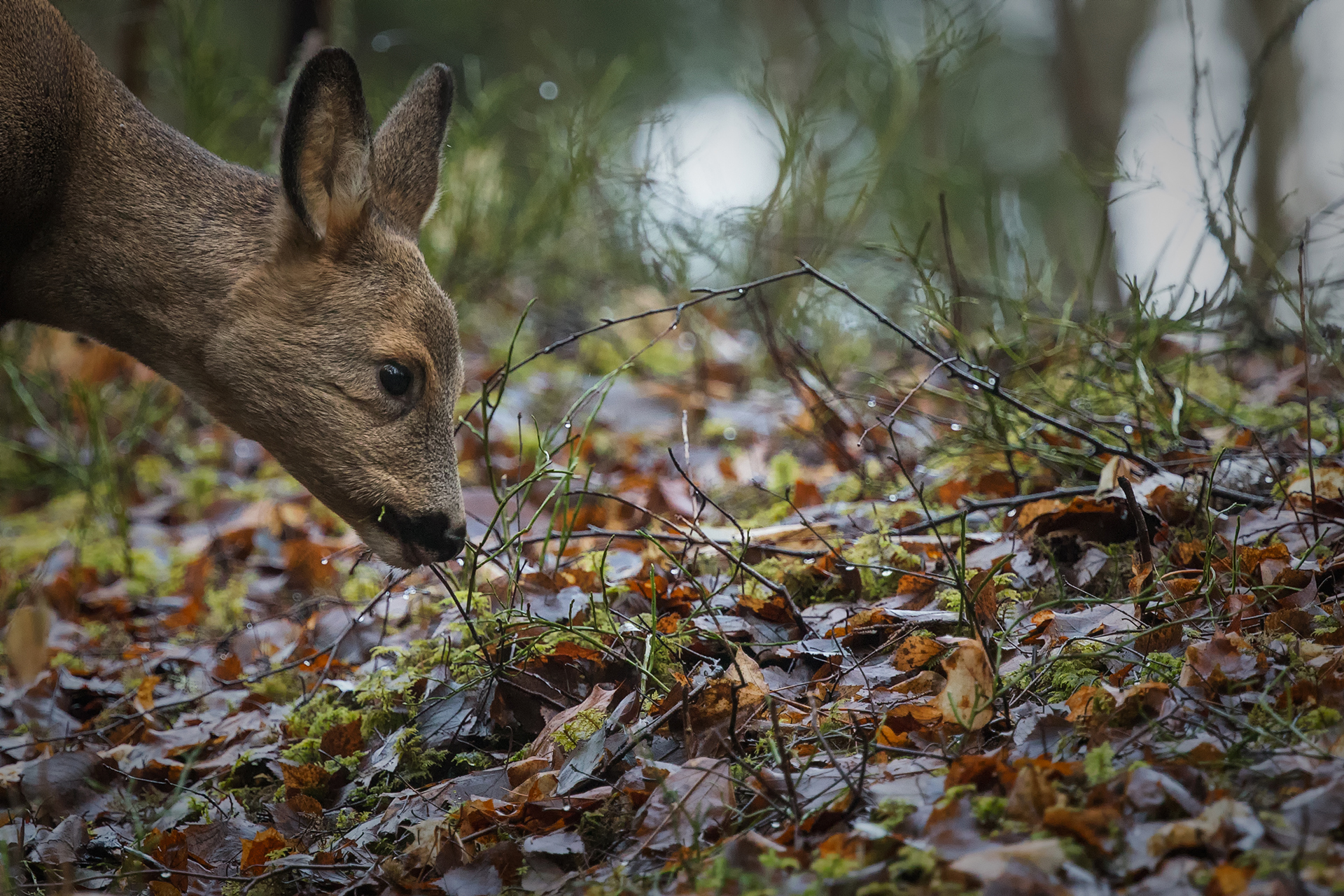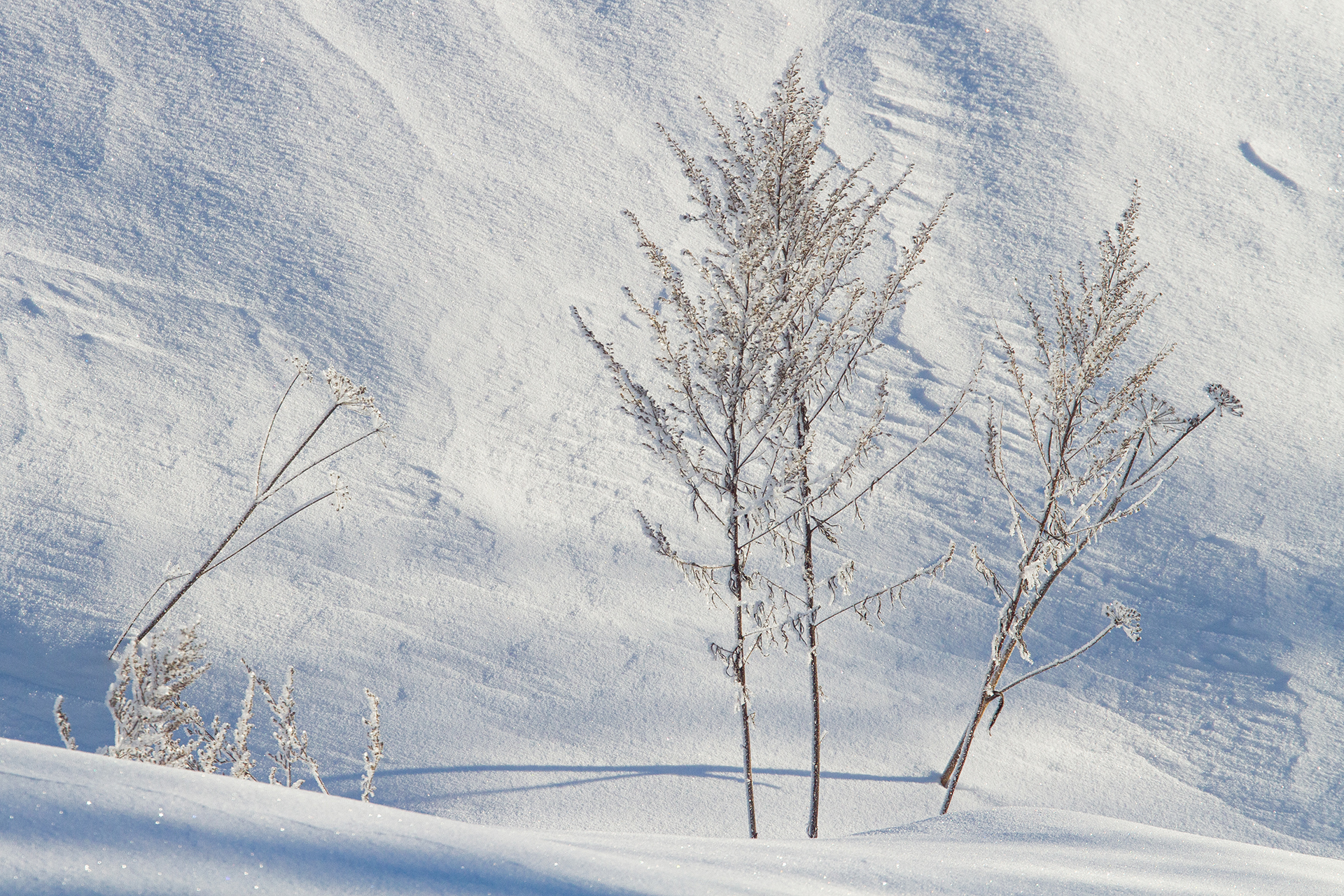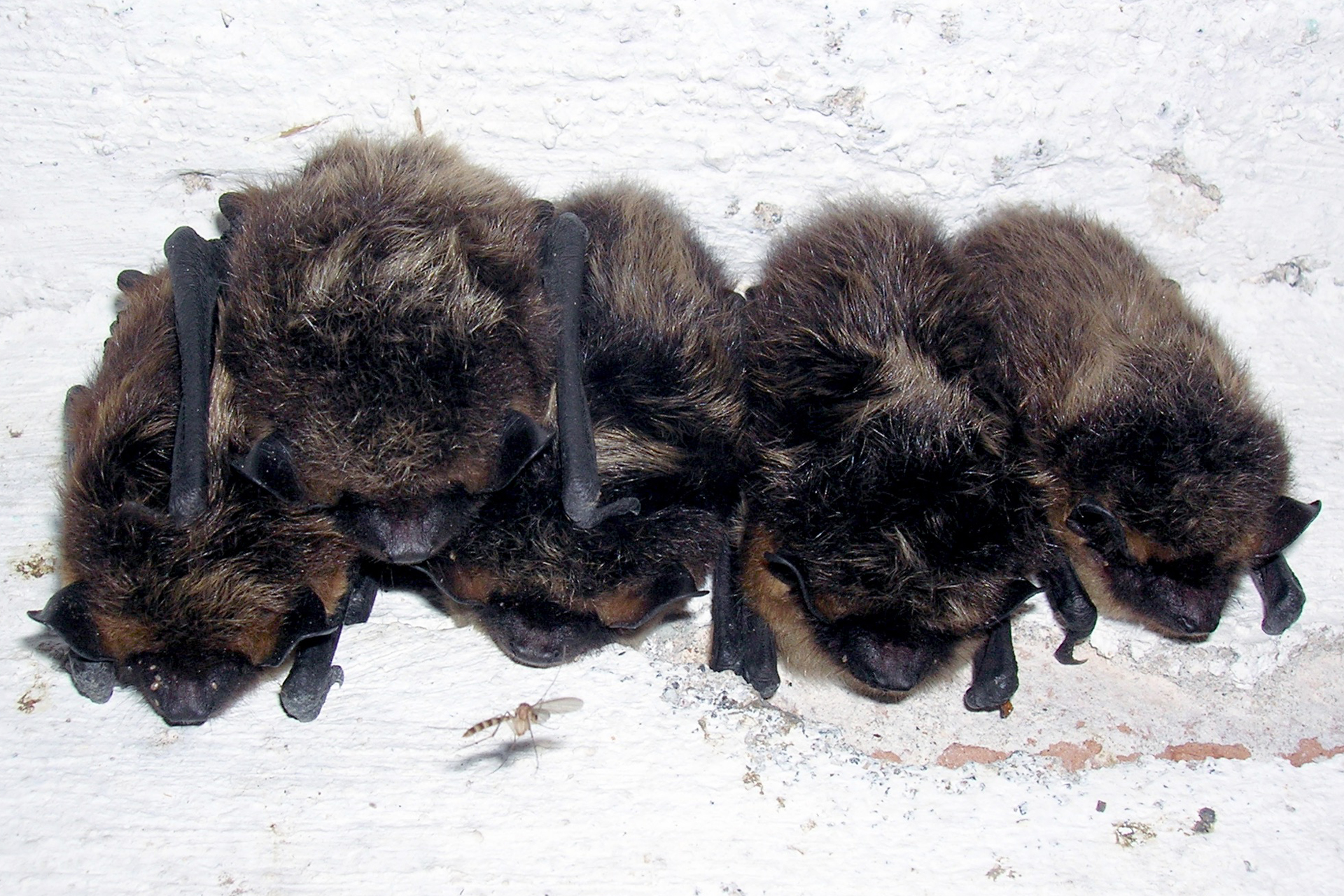Moss and lichen adorn tree trunks in winter as well
With other vegetation wilting and being covered in snow, the mosses and lichens growing on tree trunks become much easier to notice. This just goes to show that there is plenty to see in the forest in winter as well, as long as you keep your eyes open. While most mosses and lichens may look small and unimpressive compared to flowering vascular plants, they make up for it by being able to withstand extreme conditions that would kill off other plant species. On the other hand, they are also vulnerable to air pollution. Ruissalo serves as a valuable habitat for many endangered moss and lichen species that thrive in herb-rich and deciduous forests.
The critically endangered green broom moss (Dicranum viride), which grows on the trunks of deciduous trees, is found on Ruissalo in the herb-rich forest area surrounding the Spring of Choraeus, on old English oaks and lime trees. It forms dense, bright green mats that typically grow a few centimetres high.
Tree lungwort (Lobaria pulmonaria) is a large, leaf-like lichen that grows on the trunks of deciduous trees. On Ruissalo, the species can usually be found growing on English oak, Norway maple and lime trees. Its grey-green, net-like and branched strips can be up to 10–40 cm long, forming extensive growths. Native to mature, natural forests, tree lungwort has declined across southern Finland, but on Ruissalo it can still be found in the area around the Spring of Choraeus, for example. Tree lungwort is particularly sensitive to air pollution.
